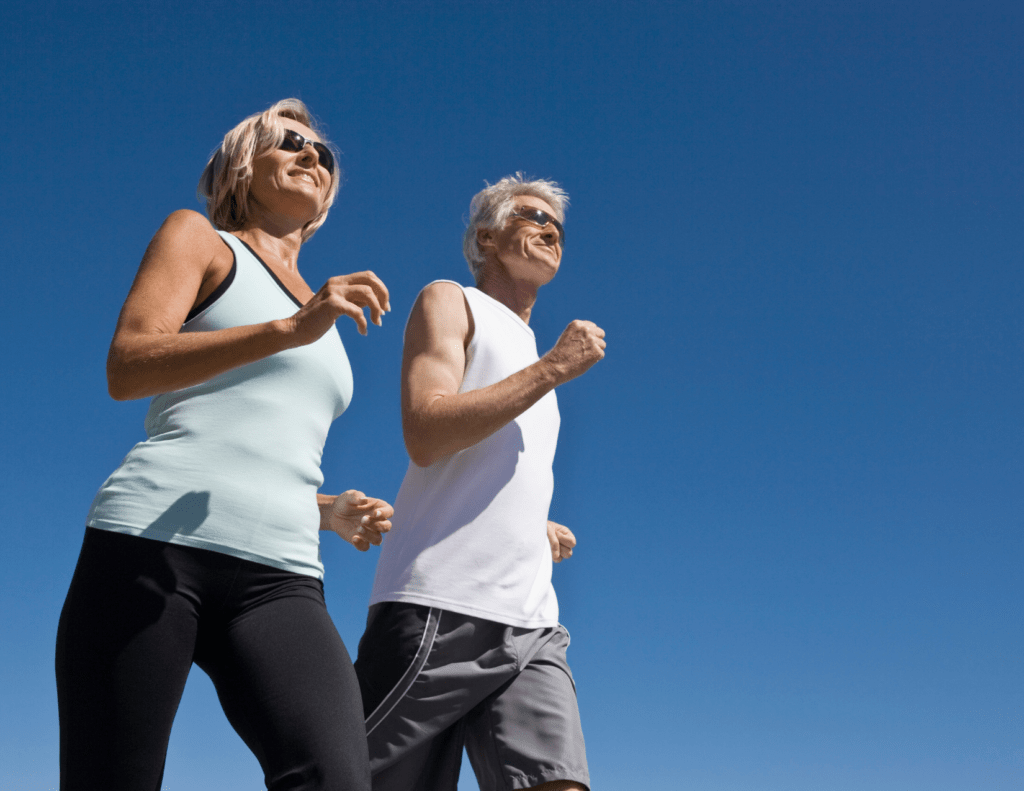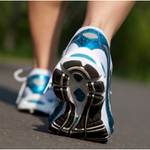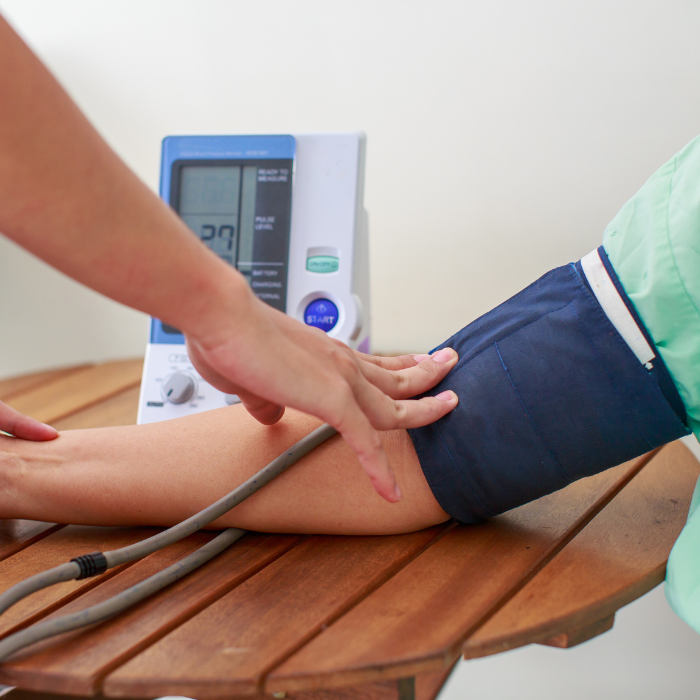Brisk Walking Holds The Key

What are 7 Benefits of Walking?
In our 20s and 30s, when the metabolism is humming along and we’re relatively carefree, it can be easy to take brisk walking for granted.
After all, what’s not to like about a moderate intensity workout that burns calories, raises our heart rate, and doesn’t require any equipment or special skills?
But as we approach middle age – or pass it – we may find that taking regular walks becomes increasingly important for maintaining our health and well-being.
Here are seven reasons why doing more brisk walking is a good idea as we get older.
1) Brisk walking is an effective way to burn calories and lose weight.
2) It’s a great exercise for people who are overweight or have joint pain.
3) Walking is one of the best exercises for improving heart health. cardiac rehabilitation program.
4) Brisk walking can help prevent or manage type 2 diabetes.
5) It’s a low-impact activity that’s gentle on the joints.
6) Walking helps improve mood, mental health, and cognitive function.
7) It’s a cost-effective form of exercise that can be done almost anywhere.
So let’s dive into more information that can lead to your transformation.
But Wait, There Is More
In addition to its physical benefits, walking can also improve mental well-being.
Walking has been shown to alleviate symptoms of anxiety and depression (more on this later), and it can also help to boost mood and improve cognitive function no matter what age, physical activity level, or fitness level.
Walking can also help to increase energy levels and lead to better sleep.
So next time you’re feeling stressed or down, try taking a brisk walk – it just might do the trick!
Start briskly walking today!
A Deeper Dive on Brisk Walking

You’ve probably heard that you should walk more.
But did you know that brisk walking has some serious health benefits?
Here are seven reasons to make brisk walking a part of your regular routine.
Benefits of Brisk Walking
1. Brisk Walking Can Help You Lose Weight

If you’re trying to lose weight, brisk walking is a great way to help.
A 155-pound person burns about 150 calories in 30 minutes of brisk walking.
And the more you walk, the more calories you’ll burn.
So if you’re looking for easy weight loss, start clocking some extra steps each day.
2. Brisk Walking Can Reduce Risk Of Heart Disease

Medical information indicates that cardiovascular disease is the leading cause of death for men and women in the United States.
But there’s good news: brisk walking can help reduce your risk of heart disease.
In fact, one study found that people who walked at a moderate pace for 30 minutes a day had a lower risk of heart disease than those who didn’t walk at all.
So if you want to keep your heart healthy, start logging some miles on the pavement.
3. Brisk Walking Can Improve Cholesterol Levels

High cholesterol is a major risk factor for heart disease.
But luckily, brisk walking can help improve your cholesterol levels.
One study found that people who walked for 30 minutes a day had higher levels of HDL (good) cholesterol and lower levels of LDL (bad) cholesterol than those who didn’t walk at all.
So if you want to keep your cholesterol in check, be sure to add some brisk walks to your weekly routine.
4. Brisk Walking Can Lower Blood Pressure

If you’re looking for a way to lower your blood pressure, consider heading to an exercise clinic or personal trainer.
In addition to brisk walking, clinics often offer other exercises that can help reduce blood pressure.
For example, yoga may be a good option for you.
Talk to your doctor about what type of exercise might be best for you and make sure to get started on a regular routine.
High blood pressure is another major risk factor for heart disease.
But guess what?
Brisk walking can help lower your blood pressure, too.
In one study, people who walked for 30 minutes a day lowered their systolic blood pressure (the top number) by an average of 4 points after 12 weeks.
So if you have high blood pressure, make sure to hit the pavement regularly.
5. Walking Can Boost Mood & Ease Anxiety/Depression Symptoms

According to the Anxiety and Depression Association of America, exercise is an effective treatment for anxiety and depression.
And what better way to get moving than by going on a nice, 20-30 minute long walk?
One study found that people who walked for 30 minutes a day had fewer anxiety and depression symptoms than those who didn’t walk at all.
So next time you’re feeling anxious or down, lace up your sneakers and go for a stroll.
6. Brisk walking can improve brain health and memory

Exercise has been shown to improve brain health and memory.
Walking may be especially beneficial.
Medical advice recommends that you get plenty of exercise, especially if you want to improve your brain health and memory.
Brisk walking is a great way to get your heart rate up and improve your overall fitness, and it may also help to improve your memory and brain function.
So be sure to add some regular walks to your schedule if you want to keep your mind sharp as you age.
Several studies found that people who walked for 40 minutes three times a week improved their memory and brain function more than those who didn’t walk at all.
So if you want to keep your mind sharp as you age, be sure to add some regular walks to your schedule.
7. Brisk walking can increase energy levels

If you suffer from fatigue or low energy levels, brisk walking may be just what the doctor ordered.
If you’re feeling run down, consider going for a brisk walk.
A study published in the “Journal of Sports Sciences” found that people who walked for 20 minutes three times a week had more energy and felt less fatigued than those who didn’t walk at all.
And if you’re not a fan of running, walking is a great alternative.
It’s an easy way to get your heart rate up and improve your overall fitness level.
So next time you’re feeling tired, go for a walk instead of reaching for another cup of coffee.
Frequently Asked Questions

When you are 40 pounds overweight do your lower legs hurt when you walk fast?
It is possible for your legs to hurt a bit when first starting out.
However, for some, it may be best to consult with a medical professional about proper treatment and management of any conditions.
It may also be helpful to consider lower-impact exercises such as swimming or cycling, as well as weight loss, as carrying excess weight can put additional strain on the joints.
Additionally, wearing proper footwear and using the appropriate walking techniques can help reduce pain during exercise.
It is important to listen to your body and not push yourself too hard.
Gradually increasing the intensity and duration of exercise may also be helpful in managing pain.
Can Walking Help With Blood Sugar Levels?
Brisk walking can help control blood sugar levels.
If you have type 2 diabetes, brisk walking can help you manage your condition.
One study found that people with type 2 diabetes who walked for 30 minutes a day had better blood sugar control than those who didn’t walk at all.
Can Walking Boost My Immune System?
Regular exercise, including brisk walking, can help boost your immune system and protect against illnesses like the common cold.
One study found that people who exercised regularly had fewer sick days and a stronger immune response to viruses than those who didn’t exercise.
Regular exercise helps to keep the body in good shape, including the muscles, heart, and lungs.
It also helps to maintain a healthy weight, which is important for overall health.
All of these factors work together to help keep the body healthy and better able to fight off illnesses like the common cold and flu.
So if you want to stay healthy this winter, be sure to add regular exercise, including brisk walking, to your routine.
Imagine how much better you feel after a 20-30 minute walk.
How Much Brisk Walking Should I do Per Day?
But how much should you be doing?
The Centers for Disease Control and Prevention recommends at least 150 minutes ( 2 hours and 30 minutes ) of moderate-intensity aerobic activity, such as brisk walking, per week for adults.
This can be broken down into smaller chunks of time throughout the week, like 30 minutes a day for five days out of the week.
But don’t feel limited by this recommendation – walking more than 150 minutes each week has additional health benefits.
Can Brisk Walking Help With Arthritis?
Brisk walking can also help with arthritis.
Walking is a great form of exercise for overall health and well-being, and it can also help improve symptoms of arthritis.
Brisk walking is especially beneficial, as it helps increase blood flow and strengthens the muscles and joints.
Plus, it’s a great way to get some fresh air and enjoy the outdoors.
If you suffer from arthritis, try to fit in some regular brisk walks to improve your symptoms and enhance your mobility.
In fact, one study found that people with knee osteoarthritis who walked for 30 minutes per day for five days out of the week ( that’s just 2 and a half hours per week ) had less pain and improved physical function compared to those who didn’t walk at all.
So if you suffer from arthritis, try to fit in some regular brisk walks to improve your symptoms and enhance your mobility.
Conclusion
As far as health information is concerned you can see, there are numerous health benefits to adding some brisk walking to your routine.
It’s an easy and accessible form of exercise that can improve your overall fitness level, brain function, energy levels, blood sugar control, immune system, and even symptoms of arthritis.
So grab a pair of comfortable shoes and hit the pavement. Your body (and mind) will thank you. Happy walking!

I am extremely inspired to make a positive
IMPACT in the world by helping you create FREEDOM.
INSPIRE you to believe in yourself and achieve more of what you want for yourself…
And of course, I am here to help you IMPROVE your quality of life!
Book some time on my calendar if you want to connect directly to me!
- Strengthen Bones & Balance Hormones with Power of Whole Body Vibration 2024
- Personal Growth and Resilience: A No-Nonsense Approach to Life in 2024
- 6 Powerful Reasons Women Over 30 Need Strength Training
- Discover Amazing Benefits of Eating Gold Kiwis For 30 Days – Healthy Body Transformation
- Should women over 40 take CoQ10? Vital Benefits and Insights
